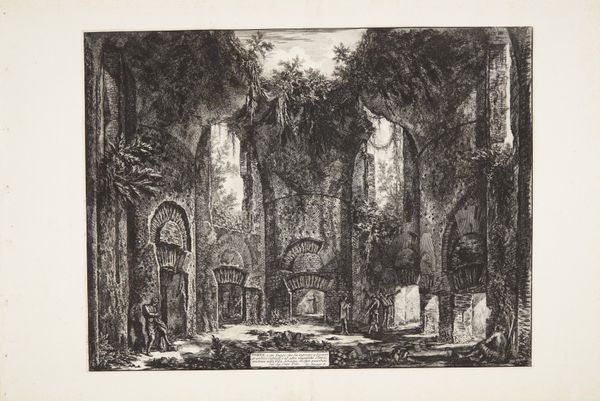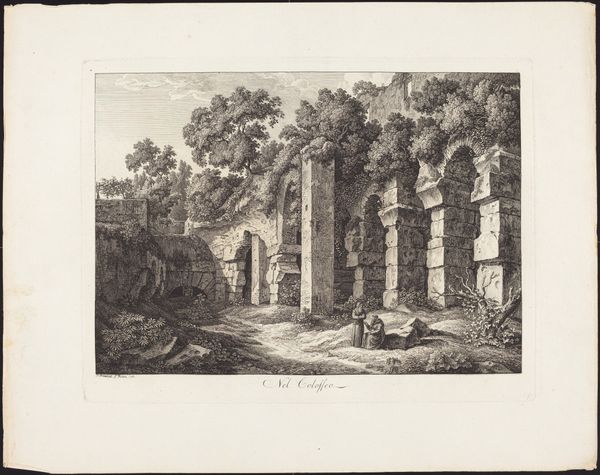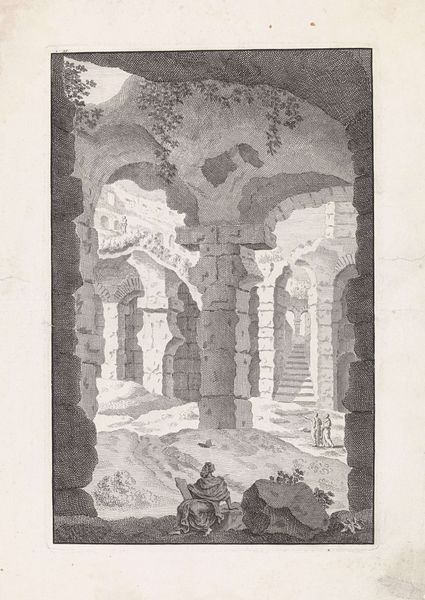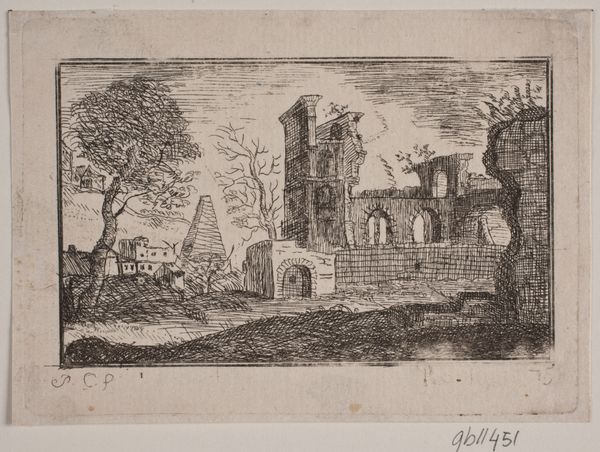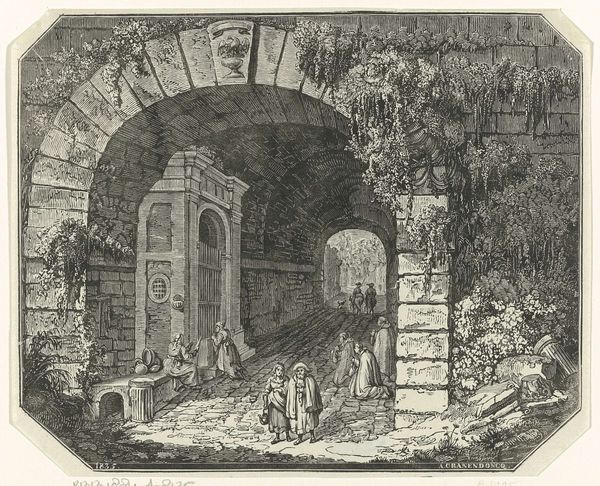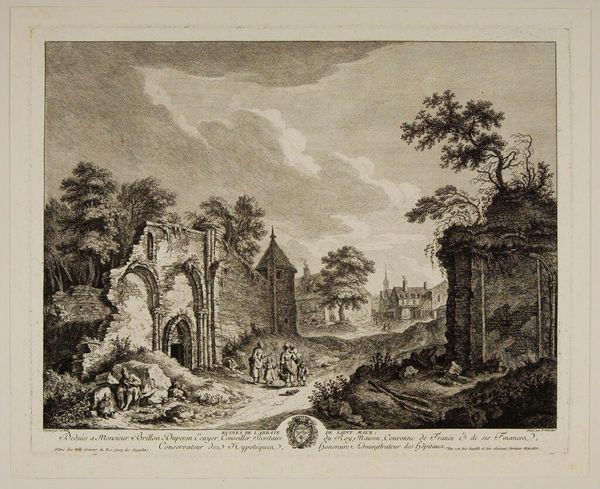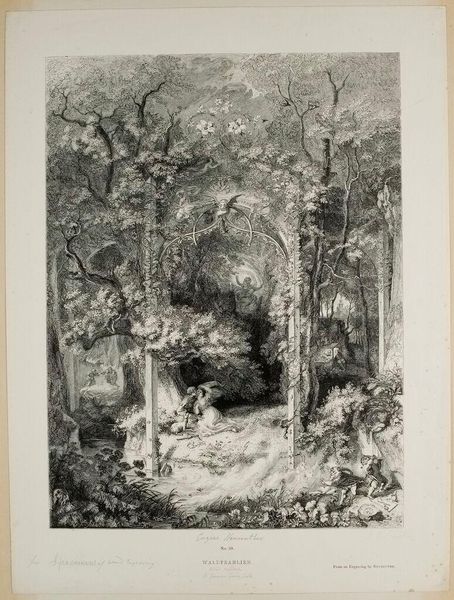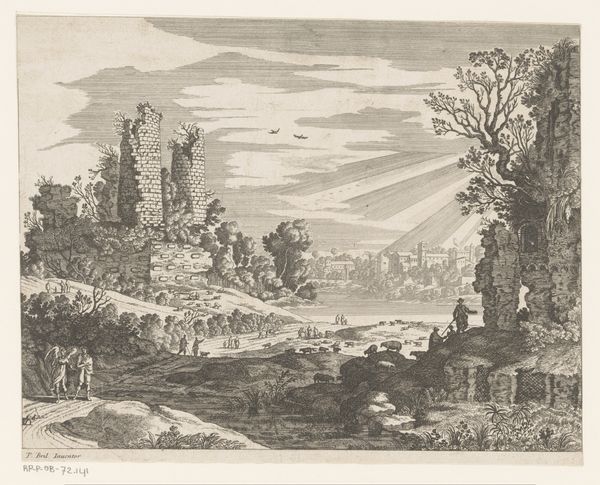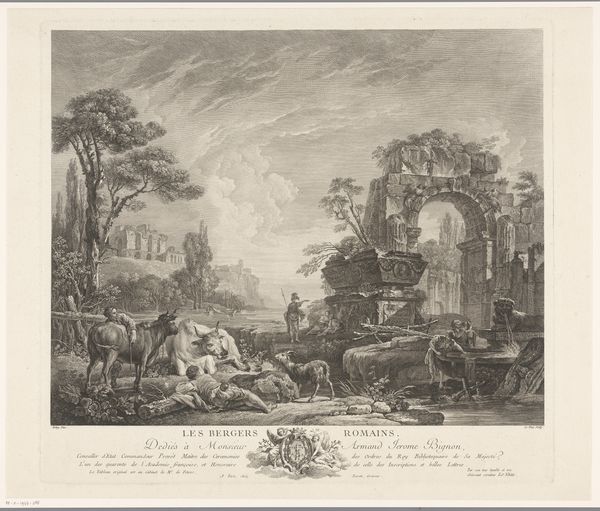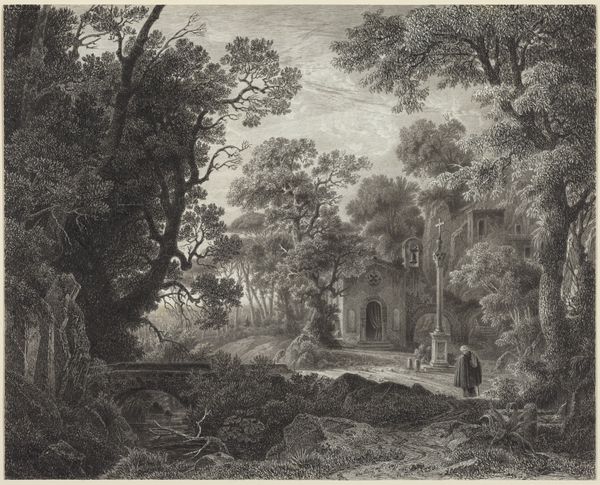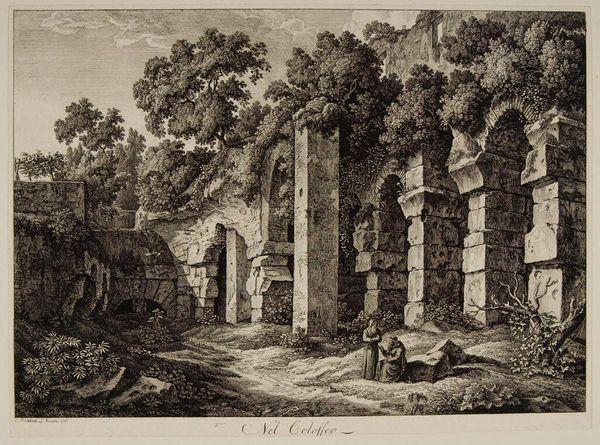
#
photo of handprinted image
#
light pencil work
#
pale palette
#
wedding photograph
#
pale colours
#
wedding photography
#
light coloured
#
old engraving style
#
white palette
#
marriage
Dimensions: height 530 mm, width 716 mm
Copyright: Rijks Museum: Open Domain
Francesco Piranesi made this etching of the ruins of Pompeii around the turn of the 19th century. Etching is an intaglio printmaking process in which a metal plate is coated with a waxy ground, and then the image is scratched into the ground with a needle. The plate is then immersed in acid, which bites into the exposed metal. In this particular print, the medium serves the message. The sharp, precise lines, made possible by the etching process, are ideal for depicting the decaying architectural forms. The contrasts of light and shadow are particularly well handled, giving a sense of the textures of the aged stone. Consider how printmaking – a mechanical process capable of producing endless identical images – reflects the social context of its creation. By the late 1700s, prints were a key means of circulating images of archeological sites. Piranesi’s print captures a pivotal moment: the industrialization of culture. This required the work of skilled engravers, printers, and distributors to deliver to a growing consumer audience.
Comments
No comments
Be the first to comment and join the conversation on the ultimate creative platform.
